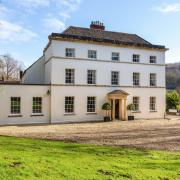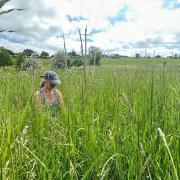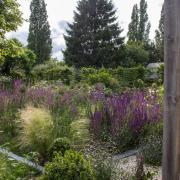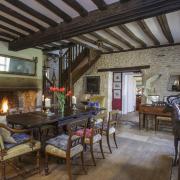Fancy creating your own wildflower meadow? With all the benefits to the planet and pollinators – as well as the feeling of wellbeing it’ll bring you – now might be the time to act on that urge
Spring has arrived, and everywhere early flowering bulbs are pushing their way frantically to the surface of the soil. But, amidst this mad dash the country’s summer wildflower meadows are also quietly stirring.
Well known wildflower species such as ox-eye-daisies, meadowsweet, foxgloves and harebells are busy jostling for position with lesser known but beautifully named others such as lady’s bedstraw, bird’s-foot trefoil, musk mallow and tufted vetch as they enter their own race skywards in time for the summer.

And then there’s yellow rattle. Anyone who’s ever thought about growing a wildflower meadow will know that, without the arrival in large numbers of this often rather average-looking yellow plant, even the most carefully curated wildflower meadow will falter.
Concern has been rising for some time over the disturbing but well-known fact that there has been a 97% decline in Britain’s wildflower meadows since the 1930s. As Britain has become increasingly less rural, more and more of our country’s grassy soil has been ploughed up and either turned over to intensive farming practices or made into building plots, leaving wildflower species to peter out.
Meanwhile, important discoveries are now also being made about the huge benefits to nature and the planet of planting more wildflowers. As well as nurturing back endangered species, did you know, for example, that it is estimated as much as 500 times more carbon is stored in a wildflower meadow than a traditional grassy field? Additionally, planting wildflower meadows helps to hold back flooding and does much to aid pollinators such as bees. Together, all this is helping to turn the nation’s attention towards the hows and whys of planting more wildflower meadows. Not least in the Cotswolds.

So, how exactly do you make a wildflower meadow, and what do you need to do to make it thrive and flourish? Those who have already tried will know just how difficult this is. But while opinions vary on everything, from the type of field you need and how and what seed to sow, there are some useful rules and places to go to for sound advice.
As long as 30 years ago, The Northwick Estate’s Upton Wold Gardens – the choice of the award judges for the Historic Houses Garden Award in 2022 – became one of the first estate gardens in the Cotswolds to introduce a wildflower meadow as part of its planting plan. Northwick’s owners, Ian and Caroline Bond – both avid garden curators – were initially inspired by the well-known botanist Miriam Rothschild who was instrumental in bringing wildflowers back to Britain’s fields. Rothschild campaigned vigorously against the use of pesticides on farmland and gardens, and was a pioneering advocate for biodiversity. She was also responsible for encouraging the introduction of wildflowers such as primroses and cowslips on roadsides and motorways. Rothschild even produced her own seed mix, aptly called ‘Farmers Nightmare’, to help establish meadows in her fields at Aston Wold, near Oundle. She then went on to assist with the creation of the first 10 hectares of wildflower meadows at Highgrove in 1982, about the same time as Northwick’s meadow was first established.
‘Miriam told me that the best time to start a new wildflower meadow is in September,’ says Ian. ‘Be sure to prepare your chosen area well first by making it as bare as possible. You can do this by having it eaten right down by stock over the summer and/or cutting it down to the bare minimum several times.’ He adds that the size of the plot doesn’t matter.

‘Miriam also thought it was very important to use wildflower seeds from as local a source as possible, and include species such as yellow cowslips, marsh orchids and poppies and wildflower grasses, as these are crucial,’ he adds.
Rothschild’s ideas about how to create wildflower meadows remain largely unchanged. The Cotswolds National Landscape’s Glorious Cotswold Grasslands team, who advise on the restoration and management of wildflower meadows, also stipulate that intensive grazing over cutting is the best preparation to begin now for a wildflower meadow, and that natural regeneration can be speeded up by harvesting seed from nearby areas.
The gaining popularity of wildflower meadow restoration and the increase in their significance is leading more gardeners to look closely at how to replicate and restore some of their own garden into wildflower havens. Now is the time to choose your potential plot of land for wildflowers with early preparation in mind, but as summer approaches it will also be important to look at how to assess what you already have and need in your plot, and then examine the different stages and ways of creating a wildflower meadow looking at how others have managed to achieve their own wildflower sanctuaries.
Next time: How good is your meadow.
You can book a visit to Upton Wold Garden at uptonwold.co.uk



























